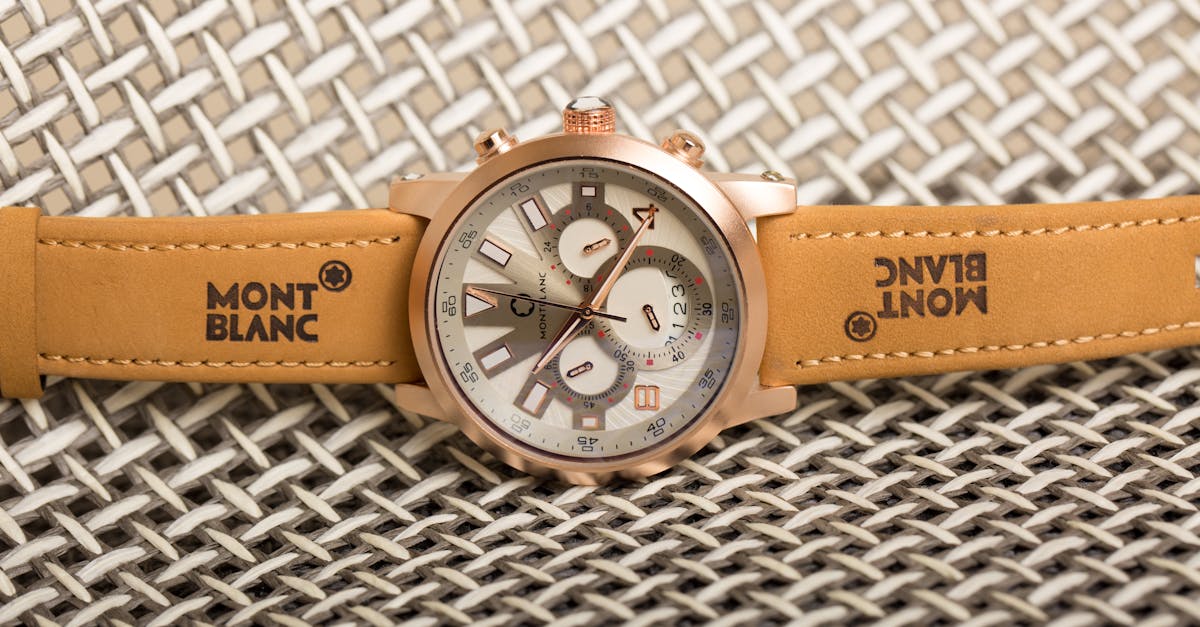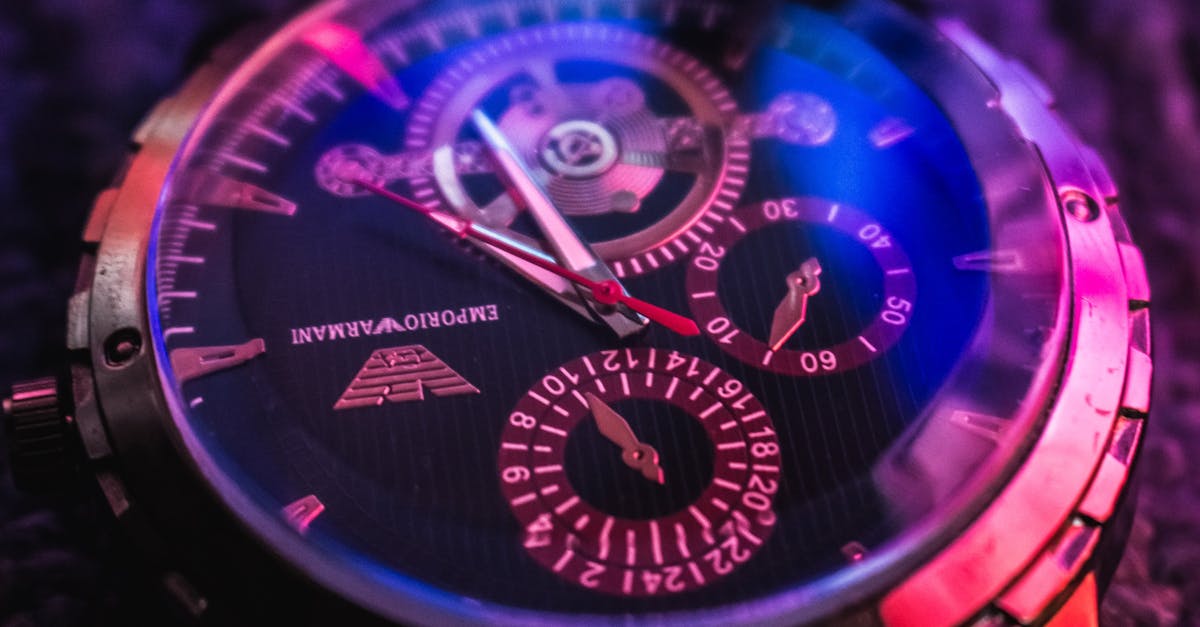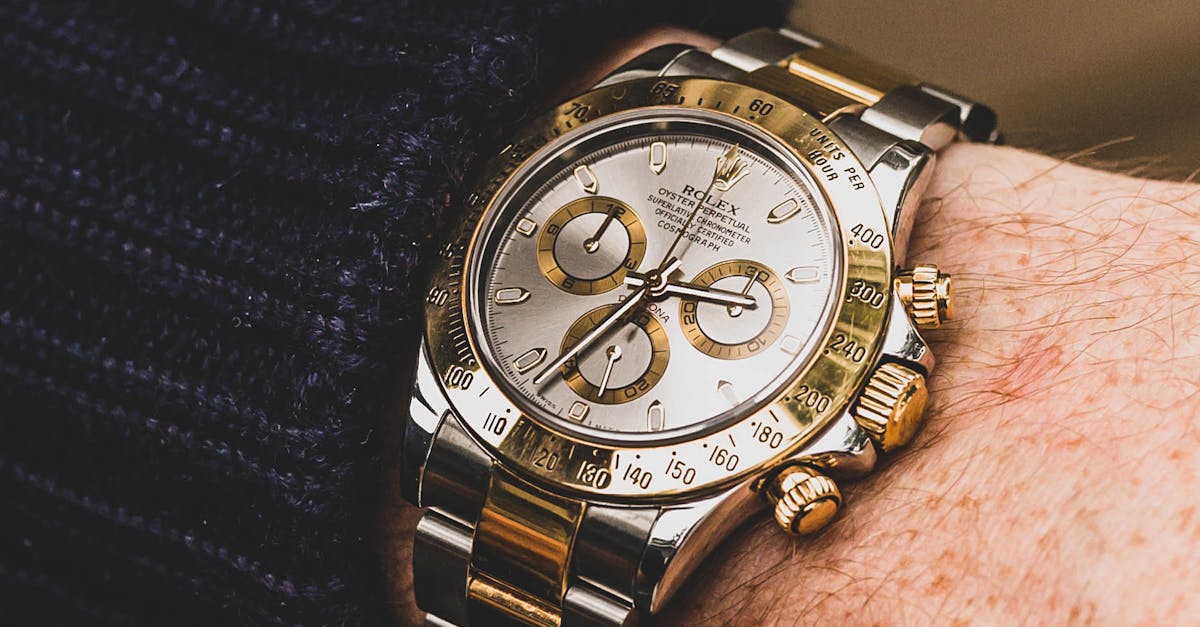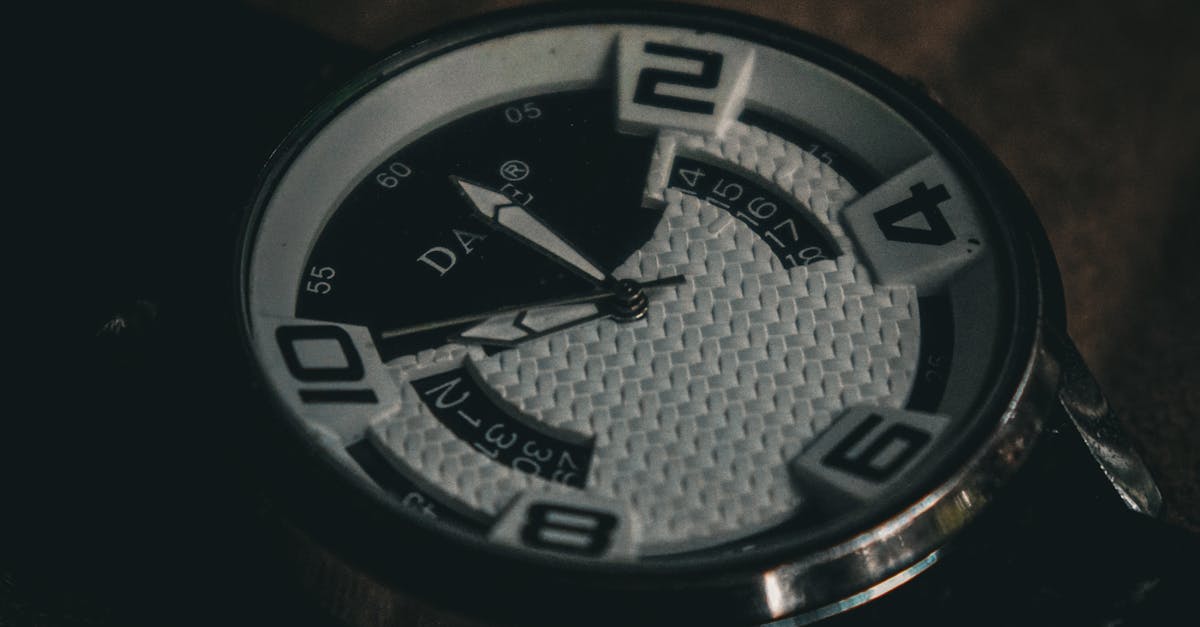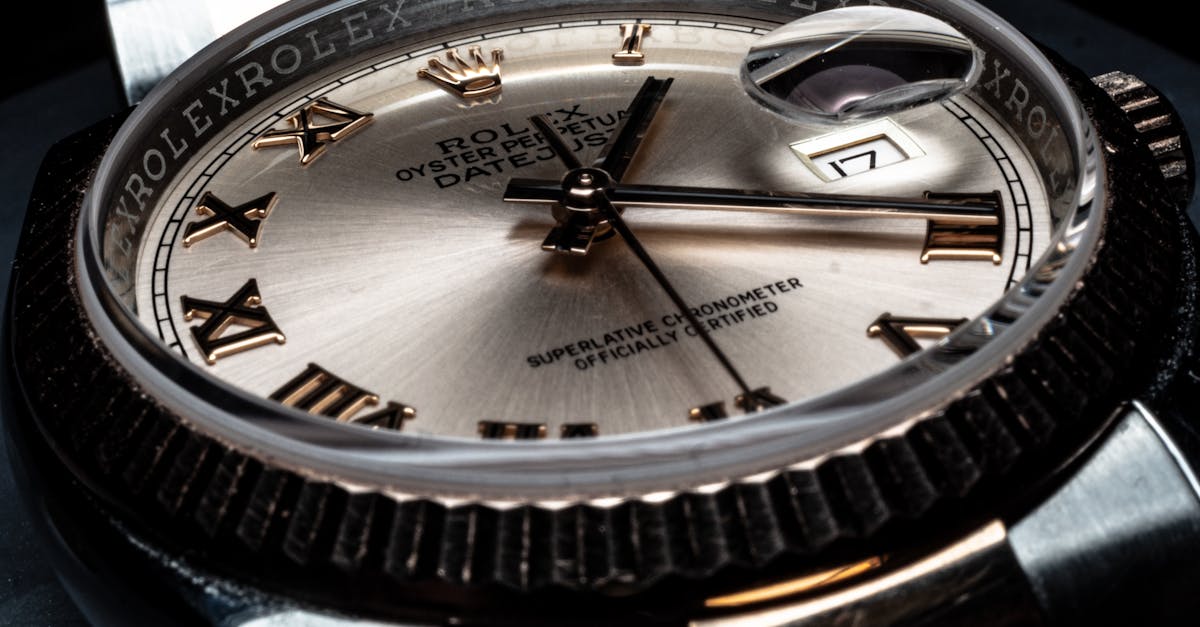Unveiling the Essence of Chronograph Watches: Precision, Style, and Functionality

Chronograph Watches: A Symphony of Time and Style
In the horological world, chronograph watches stand apart as exceptional timepieces that not only tell time but also measure it with remarkable precision. Their ability to capture elapsed time with split-second accuracy has made them invaluable tools for professionals, athletes, and anyone who cherishes the value of precise measurement.
Beyond their functionality, chronograph watches exude an undeniable allure, combining sporty elegance with horological sophistication. Their distinct design elements, featuring prominently displayed pushers and sub-dials, create a visual symphony that attracts enthusiasts and collectors alike.
Embark on a journey into the captivating realm of chronograph watches. Discover their intricate mechanisms, explore their diverse applications, and delve into the world of renowned watchmakers who have mastered the art of crafting these horological masterpieces.
1. Unveiling the Meaning of Chronograph Watches
Unveiling the Meaning of Chronograph Watches
In the vast world of horology, chronograph watches occupy a unique niche, transcending the realm of mere timekeeping and embracing the art of precision time measurement. Unlike conventional watches that simply display the time, chronographs are equipped with an additional function: the ability to measure elapsed time with remarkable accuracy.
This extraordinary capability sets chronograph watches apart from their time-only counterparts. They are not merely passive observers of time’s passage but rather active participants, allowing the wearer to capture and measure fleeting moments with split-second precision. Whether it’s timing a race, monitoring a cooking session, or simply measuring the duration of an event, chronograph watches provide an invaluable tool for anyone who values precise measurement.
Beyond their functionality, chronograph watches have also become coveted accessories, exuding an aura of sporty elegance that appeals to watch enthusiasts and collectors alike. Their distinctive design elements, including prominently displayed pushers and sub-dials, create a visual symphony that sets them apart from traditional timepieces. Whether paired with a casual outfit or a formal ensemble, chronograph watches add a touch of sophistication and understated style to any occasion.
Chronographs Explained: A Chronological Symphony
Chronographs Explained: A Chronological Symphony
Chronographs, unlike ordinary watches, are not content with merely displaying the time. They possess an extraordinary ability to capture and measure elapsed time with remarkable precision, transforming them from passive observers of time’s passage into active participants.
At the heart of a chronograph’s functionality lies a complex mechanism that orchestrates the measurement of elapsed time. When the chronograph’s start pusher is pressed, a series of gears and levers spring into action, engaging a clutch that connects the movement’s balance wheel to a separate timing train. This timing train drives the chronograph’s central seconds hand, which begins to sweep around the dial, measuring elapsed seconds.
To stop the chronograph, the stop pusher is pressed, disengaging the clutch and halting the timing train. The elapsed time is then displayed on the chronograph’s sub-dials, which typically measure minutes and hours. Pressing the reset pusher returns all chronograph hands to their zero positions, ready for the next measurement.
Types of Chronographs: Beyond the Basics
Types of Chronographs: Beyond the Basics
The world of chronographs extends far beyond the traditional mechanical marvels that have captivated watch enthusiasts for centuries. Modern technology has ushered in a new era of chronographs, offering a diverse range of options to suit every need and preference.
Mechanical Chronographs: These classic timepieces rely on a complex system of gears, levers, and springs to measure elapsed time. Their intricate mechanisms are a testament to the skill and artistry of watchmakers, and their timeless designs continue to attract collectors and aficionados.
Quartz Chronographs: Powered by a battery-operated quartz movement, these chronographs offer exceptional accuracy and reliability. They are often more affordable than their mechanical counterparts and feature a wide range of functions, including digital displays and multiple time zones.
Digital Chronographs: The epitome of modern timekeeping, digital chronographs utilize electronic circuitry to measure elapsed time with unparalleled precision. They often incorporate advanced features such as lap timing, interval timing, and data storage.
2. Exploring the Allure of Chronographs in Watchmaking
Exploring the Allure of Chronographs in Watchmaking
Chronograph watches have captured the hearts of watch enthusiasts for generations, transcending their functionality as mere timekeepers and ascending to the realm of horological masterpieces. Their unique blend of precision, style, and versatility has made them coveted accessories for discerning individuals seeking a timepiece that embodies both form and function.
Precision and Performance: Chronographs are renowned for their exceptional precision in measuring elapsed time. Their ability to capture fleeting moments with split-second accuracy makes them indispensable tools for professionals in fields such as sports, medicine, and engineering. The intricate mechanisms that orchestrate this precision are a testament to the skill and dedication of watchmakers.
Sporty Elegance: Chronographs exude an undeniable aura of sporty elegance. Their robust construction and purposeful design elements, including prominent pushers and sub-dials, create a visual symphony that appeals to those who appreciate both style and functionality. Whether paired with a casual outfit or a formal ensemble, chronograph watches add a touch of sophistication and understated luxury.
Precision Timekeeping: Capturing Every Second
Precision Timekeeping: Capturing Every Second
Chronographs are not just ordinary timekeepers; they are precision instruments designed to measure elapsed time with remarkable accuracy. This extraordinary capability makes them indispensable tools for professionals, athletes, and anyone who values the ability to capture fleeting moments with split-second precision.
In the world of sports, chronographs play a crucial role in timing races, measuring performance, and analyzing data. From the starting pistol to the finish line, chronographs provide an accurate and reliable way to determine the winner and track progress. In medicine, chronographs are used to monitor heart rates, measure the duration of surgical procedures, and time the administration of medications. Their precision ensures that medical professionals can make informed decisions and provide the best possible care for their patients.
Beyond these specialized fields, chronographs are also highly valued by individuals who appreciate the ability to measure time with precision. Whether it’s timing a cooking recipe, tracking the duration of a workout, or simply measuring the speed of a passing car, chronographs offer a level of accuracy that is unmatched by ordinary watches.
Sporty Elegance: A Timeless Aesthetic
Sporty Elegance: A Timeless Aesthetic
Chronographs are not just precision instruments; they are also coveted accessories that exude a sporty yet sophisticated allure. Their distinct design elements, which have evolved over centuries, blend style and functionality seamlessly, making them perfect for both on and off the field.
One of the most iconic features of a chronograph is its pushers. These buttons, typically located on the right side of the case, are used to start, stop, and reset the chronograph function. Pushers come in various shapes and styles, from the classic round pushers to the more modern rectangular or pump-style pushers.
Another defining characteristic of chronographs is their sub-dials. These small dials, usually located at the 3, 6, and 9 o’clock positions, display elapsed minutes, hours, and sometimes even fractions of a second. Sub-dials add visual interest to the watch face and provide quick access to important timing information.
3. The Intricate Mechanism of Chronographs: A Peek Inside
The Intricate Mechanism of Chronographs: A Peek Inside
Beneath the stylish exterior of a chronograph lies a world of intricate mechanics, a symphony of gears, levers, and springs that orchestrate its precise timekeeping abilities. Understanding the inner workings of a chronograph provides a deeper appreciation for the skill and craftsmanship that goes into creating these exceptional timepieces.
At the heart of a chronograph is its column wheel. This ingenious mechanism serves as the brain of the chronograph, coordinating the start, stop, and reset functions. When the start pusher is pressed, the column wheel rotates, engaging a series of levers that activate the chronograph’s clutch and timing train.
Once the chronograph is running, the balance wheel, the heart of the watch’s movement, drives the chronograph’s central seconds hand, which sweeps around the dial, measuring elapsed seconds. The elapsed minutes and hours are displayed on the chronograph’s sub-dials, which are driven by a separate gear train.
Unveiling the Column Wheel: The Heart of the Chronograph
Unveiling the Column Wheel: The Heart of the Chronograph
At the heart of a mechanical chronograph lies a marvel of engineering, a mechanical masterpiece known as the column wheel. This intricate component plays a pivotal role in orchestrating the chronograph’s start, stop, and reset functions with precision and reliability.
When the chronograph’s start pusher is pressed, the column wheel rotates, engaging a series of levers that activate the chronograph’s clutch and timing train. This initiates the chronograph’s timing sequence, with the central seconds hand sweeping around the dial to measure elapsed seconds.
To stop the chronograph, the stop pusher is pressed, causing the column wheel to rotate in the opposite direction. This disengages the clutch and halts the timing train, freezing the chronograph’s hands in place. Finally, pressing the reset pusher returns the chronograph’s hands to their zero positions, ready for the next timing sequence.
The Dance of Gears and Levers
The Dance of Gears and Levers
Within the intricate mechanism of a chronograph, a symphony of gears and levers work in harmonious unison to orchestrate its precise timekeeping capabilities. These components interact with each other in a carefully choreographed dance, ensuring the accurate measurement of elapsed time.
When the chronograph’s start pusher is pressed, a lever engages with the column wheel, which in turn activates the clutch and timing train. This initiates the movement of the chronograph’s central seconds hand, which is driven by a gear train connected to the watch’s balance wheel.
As the chronograph runs, a series of gears and levers work together to measure and display the elapsed minutes and hours on the chronograph’s sub-dials. These sub-dials are driven by separate gear trains, which are synchronized with the central seconds hand to ensure accurate timing.
4. Renowned Chronograph Brands: Masters of Time
Renowned Chronograph Brands: Masters of Time
In the world of watchmaking, certain brands have emerged as true masters of chronograph design and craftsmanship, leaving an indelible mark on the industry. These horological giants have pushed the boundaries of innovation, creating timepieces that are not only precise and reliable but also works of art.
Rolex: Synonymous with luxury and precision, Rolex is renowned for its iconic chronograph models, such as the Cosmograph Daytona and the GMT-Master II. Rolex chronographs are known for their rugged construction, exceptional accuracy, and timeless designs.
Omega: Another legendary name in watchmaking, Omega has a rich history of producing groundbreaking chronographs. The brand’s Speedmaster chronograph played a pivotal role in the Apollo 11 moon landing and is considered one of the most iconic timepieces ever created.
Rolex: A Legacy of Precision and Prestige
Rolex: A Legacy of Precision and Prestige
Among the pantheon of horological giants, Rolex stands as a beacon of precision, prestige, and unwavering commitment to excellence. Its chronograph watches are legendary, renowned for their exceptional accuracy, rugged construction, and timeless designs.
The Rolex Cosmograph Daytona is perhaps the brand’s most iconic chronograph. Originally designed for professional race car drivers, the Daytona has become a symbol of luxury and performance. Its tachymeter bezel allows drivers to measure speeds up to 400 kilometers per hour, while its robust construction can withstand the rigors of the racetrack.
Another notable Rolex chronograph is the GMT-Master II. Designed for pilots and frequent travelers, the GMT-Master II features a unique dual-time zone function that allows the wearer to track the time in two different locations simultaneously. Its distinctive blue and red bezel has become a signature element of Rolex design.
Omega: Pushing the Boundaries of Innovation
Omega: Pushing the Boundaries of Innovation
Omega has long been at the forefront of chronograph innovation, pushing the boundaries of technology and design to create timepieces that are both groundbreaking and timeless. Its chronographs have been worn by astronauts, divers, and other adventurers, and have played a pivotal role in some of history’s most significant moments.
One of Omega’s most iconic chronographs is the Speedmaster. Originally designed for race car drivers, the Speedmaster was chosen by NASA for its precision and reliability, and became the first watch worn on the moon during the Apollo 11 mission. The Speedmaster is known for its distinctive asymmetrical case and tachymeter bezel, and is considered one of the most iconic watches of all time.
Another notable Omega chronograph is the Seamaster Planet Ocean. Designed for divers, the Seamaster Planet Ocean is water-resistant to an impressive 600 meters and features a helium escape valve for use in saturation diving. Its robust construction and sleek design make it a popular choice for both professional divers and watch enthusiasts alike.
Breitling: The Aviator’s Choice
Breitling: The Aviator’s Choice
Breitling has earned a reputation as the watchmaker of choice for aviators and aviation enthusiasts. Its chronographs are renowned for their precision, reliability, and functionality, and have been used by pilots and astronauts for decades.
One of Breitling’s most iconic chronographs is the Navitimer. Originally designed for pilots, the Navitimer features a slide rule bezel that allows wearers to perform complex calculations related to navigation and flight. Its distinctive design, with its oversized pushers and bold numerals, has made it a favorite among pilots and watch collectors alike.
Another notable Breitling chronograph is the Superocean. Designed for divers, the Superocean is water-resistant to an impressive 300 meters and features a unidirectional rotating bezel for measuring dive time. Its robust construction and sporty design make it a popular choice for both recreational and professional divers.
5. Common Applications of Chronograph Watches: Beyond Timekeeping
Common Applications of Chronograph Watches: Beyond Timekeeping
Chronograph watches are not just timekeepers; they are versatile tools that can be used in a wide range of applications that extend beyond traditional timekeeping. Their ability to measure elapsed time with precision makes them indispensable for professionals, athletes, and anyone who values efficiency and accuracy.
Sports and Racing: Chronographs are essential tools in sports and racing, where precise timing is crucial. They are used to measure lap times, race times, and other performance metrics, providing valuable data for athletes and coaches. The tachymeter scale on many chronographs allows users to calculate speed based on the time it takes to travel a known distance.
Medical Field: In the medical field, chronographs are used for a variety of purposes, including monitoring heart rates, measuring the duration of surgeries, and timing the administration of medications. Their precision and reliability make them invaluable tools for healthcare professionals.
Sports and Racing: Capturing Every Moment
Sports and Racing: Capturing Every Moment
In the world of sports and racing, every second counts. Chronograph watches have become indispensable tools for athletes, coaches, and officials, providing split-second accuracy in measuring performance and ensuring fair competition.
For runners, cyclists, and swimmers, chronographs are used to measure lap times and track progress. The elapsed time function allows athletes to monitor their pace and make adjustments as needed to optimize their performance. In motorsports, chronographs are used to measure race times, lap times, and sector times, providing valuable data for drivers and teams.
Chronographs are also essential in field sports such as soccer and basketball, where they are used to time matches and track the duration of stoppages. In boxing and martial arts, chronographs are used to time rounds and ensure that fights are conducted fairly.
Medical Field: Precision in Healthcare
Medical Field: Precision in Healthcare
In the medical field, precise timekeeping is crucial for monitoring patients’ conditions, diagnosing illnesses, and administering treatments. Chronograph watches play a vital role in providing healthcare professionals with the accuracy they need to make informed decisions and provide the best possible care for their patients.
One of the most important uses of chronographs in medicine is for monitoring heart rate and pulse. By measuring the time between heartbeats, doctors and nurses can assess a patient’s overall health and identify any potential problems. Chronographs are also used to measure respiratory rate, which can be an indicator of respiratory distress or other medical conditions.
In surgery, chronographs are used to time procedures and monitor the patient’s vital signs. The precise timing provided by a chronograph can help surgeons to ensure that procedures are performed safely and efficiently.
Culinary Arts: Timing Perfection
Culinary Arts: Timing Perfection
In the world of culinary arts, precision is everything. From the careful measurement of ingredients to the precise timing of cooking techniques, every detail contributes to the creation of a perfect dish. Chronograph watches have become an essential tool for chefs of all levels, providing the accuracy and reliability they need to create culinary masterpieces.
One of the most important uses of chronographs in cooking is for timing the cooking of meats. Overcooking or undercooking meat can ruin a dish, so it is crucial to be able to monitor the cooking time closely. Chronographs allow chefs to set a timer and track the progress of the meat, ensuring that it is cooked to perfection.
Chronographs are also useful for timing the rising of bread and dough. The rising time is a critical factor in determining the texture and flavor of the bread, so it is important to be able to monitor it accurately. Chronographs allow bakers to set a timer and track the rising time, ensuring that the bread is ready to bake at the perfect moment.
6. Choosing the Perfect Chronograph Watch: A Buyer’s Guide
Choosing the Perfect Chronograph Watch: A Buyer’s Guide
With so many different chronograph watches on the market, choosing the perfect one can be a daunting task. But by following a few simple steps, you can find a watch that perfectly complements your lifestyle and meets your specific needs.
1. Consider Your Lifestyle: The first step is to consider your lifestyle and how you plan on using your chronograph watch. If you are an athlete or a professional who needs a precise timekeeping tool, you will need a watch with a high level of accuracy and durability. If you are looking for a more casual watch to wear everyday, you can opt for a watch with a simpler design and fewer features.
2. Set a Budget: Chronograph watches can range in price from a few hundred dollars to tens of thousands of dollars. It is important to set a budget before you start shopping so that you can narrow down your options. Once you have a budget in mind, you can start looking at watches within that price range.
Factors to Consider: Beyond Aesthetics
Factors to Consider: Beyond Aesthetics
When choosing a chronograph watch, it is important to look beyond the aesthetics and consider the following factors to ensure that the watch aligns with your intended use:
1. Movement: The movement is the heart of the watch and determines its accuracy and reliability. There are two main types of movements: mechanical and quartz. Mechanical movements are powered by a spring and are considered more prestigious, but they require regular maintenance. Quartz movements are powered by a battery and are more accurate and reliable, but they are also less expensive.
2. Complications: Complications are additional features beyond basic timekeeping, such as a chronograph, a calendar, or a moon phase indicator. Chronographs are watches that have a stopwatch function, which allows you to measure elapsed time. When choosing a chronograph, consider the type of complications you need and make sure that the watch has them.
3. Water resistance: Water resistance is an important factor to consider if you plan on wearing your watch in water. Water resistance is measured in meters (m) or feet (ft), and it indicates the depth at which the watch can be submerged without water getting inside.
Recommended Brands and Models
Recommended Brands and Models
Now that you know what to look for when choosing a chronograph watch, here are a few highly-recommended brands and models to get you started:
1. Rolex Cosmograph Daytona: The Rolex Cosmograph Daytona is one of the most iconic chronograph watches in the world. It was originally designed for race car drivers, but it has since become a popular choice for watch enthusiasts of all kinds. The Daytona is known for its rugged construction, precise movement, and timeless design.
2. Omega Speedmaster Professional: The Omega Speedmaster Professional is another legendary chronograph watch. It was the first watch to be worn on the moon, and it is still a popular choice for astronauts and space enthusiasts today. The Speedmaster Professional is known for its robust construction, reliable movement, and classic design.
3. Breitling Navitimer: The Breitling Navitimer is a classic chronograph watch that has been a favorite of pilots for decades. It features a slide rule bezel that can be used to perform complex calculations related to navigation and flight. The Navitimer is known for its sporty design, precise movement, and versatile functionality.
-
True or False: Chronograph watches are only capable of displaying the time.
-
Multiple Choice: Which of the following is NOT a type of chronograph watch?
(a) Mechanical
(b) Quartz
(c) Analog
(d) Digital
-
True or False: Chronographs are only useful for measuring elapsed time in professional settings.
-
Multiple Choice: Which component of a chronograph is responsible for coordinating the start, stop, and reset functions?
(a) Balance wheel
(b) Escapement
(c) Column wheel
(d) Mainspring
-
True or False: The Rolex Cosmograph Daytona is renowned for its durability and precision, making it a popular choice for astronauts.
-
False
-
(c) Analog
-
False
-
(c) Column wheel
-
True
